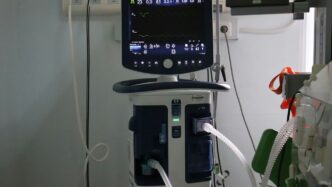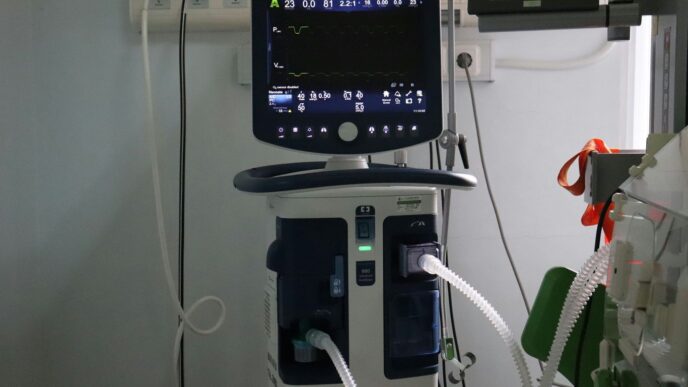Medtech cybersecurity is getting a lot more attention these days, and for good reason. Medical devices are more connected than ever. Hospitals and clinics rely on them every day, but that also means there are more ways for hackers to get in. If a device gets hacked, it could put patient safety at risk or even shut down a whole hospital. With new rules coming in 2025 and attackers getting smarter, it’s a lot to keep up with. This article breaks down what’s changing, what threats are out there, and what medtech companies can do to stay safe and keep their products on the market.
Key Takeaways
- Ransomware and supply chain attacks are hitting medtech companies harder, making device security a top priority.
- The FDA and other regulators now expect strong cybersecurity plans before devices can go to market.
- Keeping devices secure means thinking about updates and patches for years, not just at launch.
- Staff training and sharing threat info across the industry are just as important as technical fixes.
- Treating cybersecurity as part of your business strategy can speed up approvals and build trust with customers and investors.
Understanding the Evolving Threat Landscape in MedTech Cybersecurity
Medical technology has changed a lot in the last few years, mostly because new software and connected devices are showing up in hospitals and clinics everywhere. This transformation makes healthcare more efficient, but it also opens the door to new types of cyber attacks that can directly affect both patient safety and business operations. By 2025, the ways attackers target the healthcare sector have become far more creative—and more harmful. Let’s break down what’s happening right now.
Recent Trends in Cyber Attacks on Medical Technology
Hackers know that healthcare information is valuable and devices are often not updated as often as computers in other industries. Here’s what we’re seeing more of:
- Attacks on life-saving devices like infusion pumps or pacemakers
- System-wide hacks locked down entire hospital IT systems
- Data theft for patient records and private health data
In 2025, here are the sort of incident numbers the industry is dealing with:
| Threat Type | Reported Incidents (2025 YTD) | % Change from 2024 |
|---|---|---|
| Ransomware | 1020 | +27% |
| Device Hacking | 210 | +55% |
| Third-party Breaches | 435 | +33% |
| Data Exfiltration | 760 | +18% |
Ransomware and Its Impact on Healthcare Delivery
Ransomware is still the biggest headache. When it hits, operations stop—sometimes for days. Critical patient care can be delayed or canceled. Problems get worse because medical staff often have few alternatives when all digital systems are frozen. Here’s what usually happens:
- Hospital systems go offline unexpectedly
- Emergency procedures for patient care become much harder
- Businesses can lose millions per day in revenue and face reputational damage
It’s a double punch: patient care is at risk, and so is the hospital’s bottom line. In 2025, attackers aren’t just encrypting data—they often threaten to leak sensitive patient info if the ransom isn’t paid.
The Growing Risks from Supply Chain and Third-Party Vendors
Most hospitals and device makers don’t build everything themselves. They rely on a web of suppliers for hardware, software, and even data processing. If one vendor’s system gets hacked, now everybody in the chain is exposed. Some trends getting attention this year:
- Increase in attacks through software updates from trusted vendors
- More breaches traced to third parties providing IT support or cloud storage
- Supply chain attacks are harder to detect and can affect dozens, even hundreds, of hospitals at once
Hospitals need to vet vendors more closely and keep tabs on their security, not just their own. Managing these risks means looking beyond the walls of your facility—your attack surface is way bigger than it looks.
Regulatory Shifts and Compliance for MedTech Cybersecurity in 2025
Cybersecurity rules for medical devices aren’t just a side job anymore. In 2025, compliance is now a front-and-center issue that can decide if a device ever leaves the drawing board. These updates aren’t just paperwork: they force everyone in MedTech, from engineers to executives, to rethink what it takes to put a safe device on the market—and keep it there.
Key Updates in the FDA 510(k) Cybersecurity Guidance
The U.S. FDA’s 510(k) rules got a big shake-up this year. The revamped guidance now blends in new legal requirements (Section 524B from FDORA 2022), and companies really feel the difference:
- Medical devices that qualify as “cyber devices” face stricter documentation: you need a software bill of materials (SBOM), clear update and patching policies, and a plan for how you’ll handle vulnerabilities.
- For the first time, if cybersecurity plans are missing or weak, the FDA can reject a 510(k) submission outright—even if the clinical data looks fine.
- Security is officially tied to device safety and effectiveness, and now has to be built in from the start, not bolted on afterwards.
Here’s a quick breakdown:
| Requirement | Old Guidance (2023) | New Guidance (2025) |
|---|---|---|
| SBOM Required | Suggested | Mandatory |
| Patch/Update Policy | Encouraged | Required |
| Vulnerability Disclosure Plan | Optional | Required |
| Missing/Incomplete Cyber Docs | Often Overlooked | Grounds for Rejection |
Integrating Security into Regulatory Submissions
It’s not enough to just say your device is secure—you have to show it. That means:
- Embedding threat modeling and risk analysis in the design phase.
- Documenting every step: from secure coding practices to how patches will be deployed post-market.
- Submitting evidence, like penetration test summaries and incident response plans, as part of your regulatory paperwork.
This is a big shift for teams used to focusing just on clinical tests or user safety. If you skip these cybersecurity steps or wing it, you could get hit with big delays and have to start over. It’s now routine for reviewers to send back questions about firewall settings, password policies, and even how often you’ll monitor for threats.
Challenges of Meeting Global Standards and Frameworks
Of course, the U.S. isn’t the only one setting the bar higher. Now, device makers need to juggle a bunch of overlapping rules and frameworks, including:
- FDA’s new 510(k) cybersecurity requirements
- IEC 81001-5-1 (international security standard for health software)
- ISO 27001 (information security management)
- GDPR (for devices handling EU data)
Trying to tick every box, for every market, gets tricky fast:
- Different regions expect slightly different documentation (GDPR wants privacy risk breakdowns, while the FDA wants technical fix plans).
- Language and terminology can vary, leading to confusion.
- Some older frameworks conflict, forcing companies to make judgment calls.
The bottom line: compliance is now an ongoing process, not a once-and-done box to check. Teams have to build security into development, maintain it through updates, and document it every step of the way—no matter which markets they want to enter.
Building Cyber-Resilient Medical Devices Throughout Their Lifecycle
Designing medical devices that can stand up to cyber attacks isn’t just a project you finish and forget. Today, it’s an ongoing process, from initial drawing board sketches to years after devices reach hospitals and clinics. This is a new reality for anyone working in MedTech, and it makes life a lot more complicated, but also a lot safer (for all of us, honestly).
Secure-by-Design and Secure-by-Default Principles
It’s a mouthful, but secure-by-design and secure-by-default just means that devices need to start with security in mind—not added in later as an afterthought. Here’s what that really means in practice for anyone making medical devices in 2025:
- Building encryption and authentication into the software as standard features
- Limiting user access: no more default passwords or open ports
- Documenting the whole process—so if something goes wrong, it’s easier to troubleshoot
- Using reliable frameworks and standards that regulators can actually check. For example, referencing known standards like ANSI/AAMI SW96:2023 can help
You don’t need to reinvent the wheel, but you do need to bake security into every decision, from which third-party code you use, to how users interact with the device.
Addressing Long-Term Device Security and Patch Management
One of the trickiest things about medical tech is how long devices are expected to last. MRI scanners, for example, can keep running for a decade or more. The challenge?
- Scheduling security updates without taking devices offline for hours
- Making sure updates don’t break critical features or workflows
- Communicating with users (like hospital IT) about risks and fixes
A typical lifecycle plan includes regular risk reviews and patch management schedules, with clear instructions on how patches won’t disrupt life-saving operations.
| Device Type | Expected Life (years) | Update Frequency |
|---|---|---|
| Infusion Pump | 5–10 | Quarterly |
| MRI Scanner | 10–15 | Biannual |
| Patient Monitor | 7–10 | Quarterly |
It’s usually not realistic to patch everything instantly, but staying transparent and organized goes a long way. Even small fixes can make a big difference if attackers are looking for easy ways in.
Managing Vulnerabilities in Legacy Systems
Older devices are everywhere in hospitals, and replacing them can cost a fortune—not to mention all the technical hurdles. Here’s what most teams are doing with legacy tech:
- Cataloging what’s actually still in use (a lot isn’t even inventoried)
- Applying network segmentation so that outdated devices can’t connect to the main hospital network
- Using strict user access controls so only certain staff can interact with risky systems
- Setting up monitoring—alerts if there’s unexpected access or data movement
To be honest, it’s messy. But ignoring unsupported or outdated tech isn’t an option. Even small steps, like moving at-risk gear to a separate network, can cut down exposure.
Building truly cyber-resilient medical devices is hard work and takes planning, but in 2025, it’s just part of doing business in healthcare. If you’re not thinking about it every year—and for every device—you’re already behind.
Human Factors and Organizational Resilience in MedTech Cybersecurity
Security in MedTech really isn’t just about technology—people play a huge role. If someone clicks the wrong link or shares the wrong file, things can snowball fast. Organizations need to look beyond software and firewalls and focus just as much effort on people and processes. Here’s how the day-to-day realities shake out in 2025.
Empowering Staff to Counter Phishing and Social Engineering
No matter how good your technical setup is, attackers keep going after staff. Fake emails, bogus calls, and convincing text messages are constant threats. Here’s what actually makes a difference:
- Regular, bite-sized training sessions—long lectures don’t stick, but quick reminders help
- Fake phishing tests that catch people off guard and provide instant feedback
- A simple, no-blame reporting process for suspicious messages
In 2025, a well-prepared team is faster at spotting tricks. According to a recent industry survey, organizations with ongoing simulated phishing programs saw a 60% drop in staff clicking real malicious links over 12 months.
| Training Approach | Reduction in Clicks |
|---|---|
| Annual classroom session | 12% |
| Monthly micro-learning bursts | 38% |
| Frequent simulated phishing | 60% |
Developing a Cyber-Aware Culture in Healthcare
Getting everyone on board isn’t just about a yearly policy review. Real cultural change needs:
- Leadership setting the example—if execs ignore security, so will everyone else
- Recognizing and rewarding safe behavior, not just catching mistakes
- Making security part of every project kickoff and work routine
Culture takes time to shift. But when nurses, doctors, and techs all speak up about digital risks, issues get fixed faster. A strong, shared mindset around cyber risk stops small mistakes from spiraling into major failures.
Collaborating Through Sector-Wide Threat Intelligence
The healthcare sector is always in hackers’ sights. Attacks rarely stay isolated to one hospital or company. That’s why sharing knowledge across the industry is so important.
- Participate in trusted sharing networks, like ISACs or local health consortiums
- Quickly share new threats or attack details (safely) so others can act
- Tap into national security alerts or vendor warnings as soon as they’re available
Teams that work together close gaps faster and keep patient safety front and center. Building relationships across organizations—competitors or not—pays dividends when new risks emerge. In this growing threat climate, resilience means nobody tries to solve everything alone.
Emerging Threats and Advanced Attack Techniques Targeting MedTech

The way attackers are targeting medical technology keeps changing. In 2025, it’s not just about generic ransomware anymore—MedTech companies have to keep up with new tactics that can hit everything from device firmware to patient records.
Nation-State Espionage and Intellectual Property Theft
Nation-states look at MedTech as a goldmine. These attackers focus on:
- Stealing blueprints for new devices before they ever get to market
- Trying to get access to patient records, sometimes for blackmail, sometimes for intelligence
- Disrupting health systems in rival countries
The reality is that even small MedTech firms can wind up as collateral damage in these attacks. International tensions and the race for innovation make medical research and device IP more desirable to foreign actors than ever before.
Zero-Day Vulnerabilities in Connected Devices
Zero-days are flaws nobody knew existed—at least until hackers start to use them. This is a major headache for device makers because:
- There’s often no fix ready when the attack hits
- Devices might be hard or impossible to patch quickly
- Attackers go after the weakest link in the hospital network, which is often an older or little-monitored device
Here’s a quick breakdown of zero-day incident growth:
| Year | Reported MedTech Zero-Days |
|---|---|
| 2022 | 7 |
| 2023 | 12 |
| 2024 | 21 |
| 2025* | 29 |
*Estimate for 2025 so far (as of 10/10/2025)
AI-Driven Impersonation and Data Breaches
Attackers are now using AI to impersonate clinical staff, tech support, and even regulatory officials. This type of attack can involve:
- Sending convincing emails or voice messages to trick staff into giving up device credentials
- Creating fake helpdesk sessions that look real
- Automatically scanning for weak points in networked devices
Recent examples show these AI-powered attacks can breach defenses much faster than traditional phishing methods, making manual detection tough.
Main concerns for MedTech in this area include:
- Rapid, large-scale credential phishing through AI-generated communications
- Targeted attacks on hospital administration for patient data theft
- Automated exploit research against device firmware and hospital systems
Medical technology companies need to keep a close watch, because these emerging threats don’t just slow down operations. Sometimes, they lead to compromised patient safety, loss of trust, and massive financial damage.
Turning Cybersecurity Into a Strategic Advantage for MedTech Innovators
For MedTech startups and established players in 2025, cybersecurity is more than a checkbox. It’s become something that actually shapes your reputation, investor trust, and even how fast you get to market. The new reality is: integrating cybersecurity early on can give you a competitive edge, not just keep you out of trouble. Here’s how it looks on the ground.
Reducing Time-to-Market with Proactive Security Posture
If you’ve ever dealt with regulatory hurdles, you’ll know delays are expensive and frustrating. By baking in strong security measures from day one, you avoid backtracking or costly reworks that slow down FDA or EU MDR approval. A few specifics:
- Early security reviews spot possible weaknesses before submission, making regulatory approvals smoother.
- Thorough documentation and real-world vulnerability tests mean less back-and-forth with regulators.
- Avoiding last-minute compliance fixes keeps your release timeline on track.
| Step | Time Saved (Est.) |
|---|---|
| Security upfront | 2–5 months |
| Last-minute fixes | -2 to -6 months |
This isn’t just theory. Startups that move fast on security have already shaved months off their market entry by avoiding surprise findings.
Building Investor and Market Confidence
A data breach or public recall immediately tanks trust, but a clean security record does the opposite. Here’s why investors and hospitals are asking tough questions about device cybersecurity now:
- Investors want assurance there’s no hidden risk that could ruin a launch or result in lawsuits.
- Hospitals and clinics look for proof that products can withstand real cyber attacks.
- Regulators award approvals faster when they spot clear, repeatable security processes.
Bulletproofing cyber defenses isn’t just about avoiding fines. It makes investors view you as a safer bet, which is huge when funding is competitive.
Emphasizing Cybersecurity in Product Differentiation
It’s noisy out there. Every MedTech company is shouting about features, price, or clinical results. But security is now a true market differentiator. Shout about it:
- List your compliance with global standards (like FDA, ISO 27001, DCB0129) on product literature.
- Show details of real-world testing, such as ethical hacking or simulated threat responses.
- Promise ongoing support for security updates and vulnerability management (not just at launch).
Products that advertise security as a feature regularly win contracts, especially with buyers burned by previous incidents. In 2025, being “secure by default” isn’t a luxury—it’s what people expect.
So, if you want a head start, start thinking of cybersecurity not as a headache, but as the best way to stand out. Speed, trust, and differentiation all begin with a strong security focus.
Practical Strategies for Strengthening MedTech Cybersecurity in 2025
2025 isn’t shaping up to be an easy year for anyone building or handling medical technology. Folks are trying to keep medical devices secure while dealing with more complex threats and stricter regulation. The good news? There are practical steps teams can take to reduce risk and keep patient safety front and center.
Implementing Penetration Testing and Real-World Attack Simulations
Hackers are getting smarter, so security testing needs to get smarter, too. Regular penetration testing gives organizations a chance to find and fix problems before attackers do. This goes beyond ticking a compliance box; it’s about understanding how your device holds up against new tactics.
- Simulate actual attack scenarios tailored to healthcare environments
- Test devices and associated systems (apps, cloud, connections)
- Use independent experts for unbiased results
- Document results for internal and regulatory review
A small table showing how pen testing helps:
| Pen Testing Benefit | Result |
|---|---|
| Finds Real-World Flaws | Fix before attackers exploit |
| Meets FDA/ISO Expectations | Supports documentation & compliance |
| Improves Device Trust | Boosts user and investor confidence |
Leveraging Zero-Trust Architectures
Old-school, "trust but verify" network security just doesn’t cut it anymore. Zero-trust security is built on the idea that no device, user, or system is trusted automatically—not inside or outside your network.
Key steps to get started:
- Verify every user and device, every single time they connect.
- Minimize how much any one system can access—only the minimum needed.
- Monitor traffic between devices, apps, and users, looking for odd behavior.
- Segment networks so a breach in one area doesn’t let hackers roam freely.
This approach takes time to implement but pays off by cutting off cyber attackers at every step.
Partnering with Cybersecurity Experts and Managed Service Providers
Even the most skilled in-house teams sometimes need outside help. Specialized cybersecurity firms have seen all sorts of attacks and know what to look for.
Benefits to teaming up:
- Fill expertise gaps quickly without long hiring searches
- Stay current as threats and best practices change
- Offload time-consuming monitoring and patch work
- Access incident-response teams if something does go wrong
When working with an outside partner, make sure to:
- Check their experience with healthcare and your device type
- Get clear documentation for your records
- Define roles so nothing falls through the cracks
There’s no one-size-fits-all strategy, but using these approaches together gives medtech companies better odds against cyber attacks. Start with testing, rethink how you trust connections, and bring in experts as needed—it’s really about staying vigilant and not just doing the bare minimum anymore.
Conclusion
So, that’s where things stand for MedTech cybersecurity as we head into 2025. The threats are getting more complicated, and the rules are only getting tighter. Hospitals and device makers can’t afford to treat security as an afterthought anymore. It’s not just about ticking boxes for the FDA or other regulators—it’s about keeping patients safe and making sure care doesn’t get interrupted by hackers. Sure, it can feel overwhelming, especially with new devices, third-party vendors, and all the updates that need to happen. But taking small, steady steps—like regular testing, clear documentation, and working with trusted partners—can make a big difference. The main thing is to stay alert, keep learning, and remember that cybersecurity is now part of the job for everyone in healthcare tech. If we all do our part, we can keep moving forward without putting patients or progress at risk.














